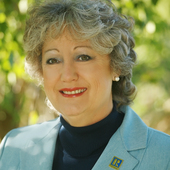BACKGROUND OF TRI DAM. HOW IT CAME ABOUT
The Oakdale Irrigation District (OID) and the South San Joaquin Irrigation District (SSJID), cooperatively operating as the Tri-Dam Project, are the owners and operators of the Tulloch Project (Project). OID and SSJID received an initial license for the Project (No. 2067) from the Federal Energy Regulatory Commission (FERC) effective on January 1, 1955, for a term ending December 31, 2004. A new License was issued on February 28, 2006 for a term of 40 years ending on Jan 1, 2046. The new License standard Article 39 and this Shoreline Management Plan provides Tri-Dam Project with the authority to grant permission for use of lands within the FERC Project Boundary without prior approval of FERC for certain incursions into the project boundary. The FERC Project Boundary is generally defined as the area within the 515 foot elevation contour (five feet above the normal maximum pool elevation) that surrounds the reservoir.
Historically Tri-Dam Project operated under an initial Reservoir Management Plan with FERC on November 3, 1978, supplemented it on December 8, 1978, and January 9, 1979. Tri-Dam Project also filed with FERC on November 20, 1978, to permit the Heart Federal Savings and Loan Association to develop and sell lands within the Lake Tulloch Shores Subdivision Unit Nos. 1 and 2. The adopted regulations including Article 39, which set forth specific development standards which applied to Lake Tulloch Shores. FERC approved the Reservoir Management Plan including the subdivision on February 2, 1979. Tri-Dam Project requested an additional amendment dealing with construction of erosion protection facilities on July 8, 1998, which FERC approved on October 13, 1998.
In anticipation of obtaining a new license for the Project, Tri-Dam Project, in cooperation with PG&E Company, conducted broad-focus public meetings with resource agencies, non-governmental organizations (NGOs), and other parties interested in relicensing of this Project as well as other projects in the Stanislaus River watershed. The first of the broad-focus public meetings took place in Stockton, California, on July 27, 1999, at which time the attendees of that meeting decided to refer to the participants at as the Stanislaus Planning Action Team (SPLAT). Under SPLAT, a number of subgroups were formed. One of these, the Tulloch Reservoir Shoreline Management Subgroup, was created to develop a new Tulloch Reservoir Shoreline Management Plan (Plan) that would become effective upon issuance of a new license to OID and SSJID for the Tulloch Project, or sooner. That Plan was filed with the FERC License application. The new License directed that Tri-Dam filed an updated plan as described below within 1 year, an extension was granted to December 1, 2007
Within one year of license issuance, the licensee shall revise the Tulloch Reservoir Shoreline Management Plan. The revised plan shall include, at a minimum: (1) an inventory of sensitive environmental resources within the project boundary (i.e., natural and cultural resources); (2) maps of sensitive shoreline zones that should be afforded extra protection without compromising confidential site locations; (3) strategies that the licensee will implement to protect such sensitive areas from inappropriate encroachment; (4) provisions for future updates to the plan as new information becomes available; and (5) provisions for informing shoreline private landowners about the importance of protecting the zones identified as having sensitive environmental resources. The licensee shall coordinate the environmental information needed for future updates to this plan, specified in item (4), with the information gathered pursuant to Article 405, item (10) of the vegetation management plan.
The plan shall be developed in consultation with the California Department of Fish and Game, the U.S. Fish and Wildlife Service, Tuolumne County, Calaveras County, and representatives of homeowner's associations for land that abuts Tulloch reservoir. The licensee shall include with the revised shoreline management plan that it files with the Commission, documentation of consultation with the consulted entities, copies of comments and recommendations made in connection with the plan, and a description of how the plan accommodates the comments and recommendations. The licensee shall allow a minimum of 30 days for consulted entities to comment and to make recommendations before filing the plan with the Commission. If the licensee does not adopt a recommendation, the filing shall include the licensee's reasons, based on project-specific information.
The Commission reserves the right to require changes to the plan. The revised plan shall not be implemented until the licensee is notified that the plan is approved. Upon Commission approval, the licensee shall implement the revised plan, including any changes required by the Commission. The shoreline management plan filed with the Tulloch license application shall remain in effect until the Commission approves the revised plan."

Comments(0)